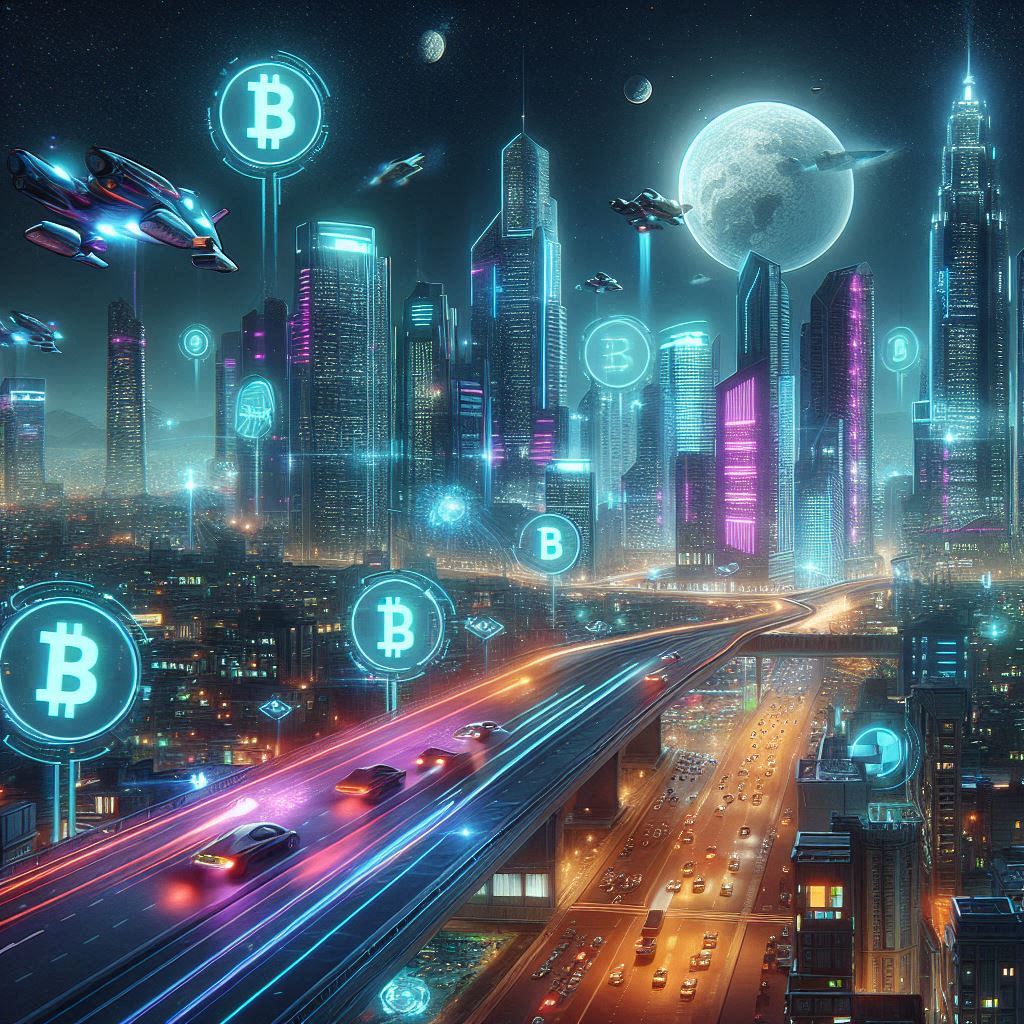Key Takeaways: Revolutionizing Decentralized Computing and Communication
- The TON Blockchain is a high-performance, scalable network designed to support a wide range of decentralized applications and services.
- TON’s unique architecture, which includes sharding and a Proof-of-Stake consensus mechanism, enables fast and cost-effective transactions while maintaining security and decentralization.
- The TON ecosystem comprises several key components, such as TON DNS, TON Storage, and TON Payments, which provide essential infrastructure for building and running decentralized applications.
- TON has a strong focus on user experience and adoption, with features like human-readable account names, instant hypercube routing, and backwards compatibility for existing web technologies.
- Despite regulatory challenges and a highly competitive landscape, TON has the potential to become a leading platform for the development and growth of the decentralized web.
Introduction
The world of blockchain technology is constantly evolving, with new projects and platforms emerging to tackle the challenges and opportunities of a decentralized future. One such project that has garnered significant attention in recent years is the TON Blockchain, a high-performance, scalable network designed to support a wide range of decentralized applications and services.
Developed by Telegram, the popular messaging app, TON aims to provide a comprehensive ecosystem for building and running Web3 applications, combining the speed and efficiency of traditional web technologies with the security and decentralization of blockchain networks. In this article, we’ll take a deep dive into the TON Blockchain, exploring its unique features, architecture, and potential impact on the future of decentralized computing and communication.
The Vision Behind TON
The TON Blockchain was conceived as a response to the limitations and challenges faced by existing blockchain networks, particularly in terms of scalability, user experience, and mainstream adoption. The project’s whitepaper, released in 2018 by Telegram founder Pavel Durov and his brother Nikolai, outlined an ambitious vision for a “third-generation” blockchain platform that could support millions of users and transactions without compromising on speed, security, or decentralization.
At its core, TON is designed to be a “Internet of Blockchains,” a decentralized network that can seamlessly connect and interoperate with multiple blockchain protocols and networks. By creating a unified ecosystem for building and running decentralized applications, TON aims to overcome the fragmentation and compatibility issues that have plagued the blockchain space, making it easier for developers to create and deploy applications that can scale to meet the needs of a global user base.
Some of the key goals and principles behind the TON Blockchain include:
- Scalability: TON employs a sharded architecture and a Proof-of-Stake consensus mechanism to achieve high transaction throughput and low latency, enabling the network to process millions of transactions per second.
- Interoperability: TON is designed to be compatible with multiple blockchain protocols and networks, allowing for seamless cross-chain communication and value transfer.
- User Experience: TON prioritizes ease of use and accessibility, with features like human-readable account names, instant hypercube routing, and backwards compatibility for existing web technologies.
- Decentralization: TON maintains a high degree of decentralization through its distributed network of validators and its open-source, community-driven development model.
- Versatility: TON aims to support a wide range of use cases and applications, from decentralized finance (DeFi) and gaming to social media and content distribution.
By pursuing these goals and principles, TON seeks to create a blockchain platform that is not only technologically advanced but also practical and user-friendly, laying the foundation for the mass adoption of decentralized technologies in the years to come.
TON’s Unique Architecture and Features
To achieve its ambitious goals, the TON Blockchain employs a unique architecture and set of features that set it apart from other blockchain platforms. Some of the key components and innovations of the TON network include:
Infinite Sharding Paradigm
One of the most significant challenges faced by blockchain networks is scalability, or the ability to process a large number of transactions without sacrificing speed or decentralization. To address this issue, TON employs a sharded architecture, which involves dividing the network into multiple smaller chains or “shards” that can process transactions in parallel.
TON’s sharding mechanism is based on the concept of “infinite sharding,” which allows for the dynamic creation and merging of shards as needed to accommodate changes in network load and user demand. This approach enables TON to achieve near-linear scalability, meaning that the network’s transaction throughput can increase in proportion to the number of nodes and shards.
Proof-of-Stake Consensus
To secure the network and validate transactions, TON uses a Proof-of-Stake (PoS) consensus mechanism, which relies on validators staking their native tokens (TON Coins) to participate in the block production process. Validators are selected to produce blocks based on their stake and are rewarded with transaction fees and newly minted tokens for their contributions.
TON’s PoS mechanism is designed to be energy-efficient and accessible, allowing anyone with a sufficient stake to become a validator and contribute to the network’s security. The PoS algorithm also includes features like “catchain” and “soft majority voting” to ensure fast and reliable consensus even in the presence of malicious actors or network failures.
TON Virtual Machine
At the heart of the TON Blockchain is the TON Virtual Machine (TVM), a high-performance, Turing-complete execution environment for smart contracts and decentralized applications. The TVM is designed to be compatible with multiple programming languages and development frameworks, making it easy for developers to build and deploy applications on the TON network.
The TVM also includes several optimizations and features to improve performance and security, such as:
- Just-in-time compilation and caching of smart contract code
- Support for parallel execution and sharding of smart contract state
- A gas metering system to prevent infinite loops and resource exhaustion attacks
- A formal verification framework for proving the correctness and safety of smart contracts
By providing a flexible and efficient runtime environment for decentralized applications, the TON Virtual Machine aims to attract a wide range of developers and projects to the TON ecosystem.
TON DNS and Payments
To make the TON Blockchain more user-friendly and accessible, the network includes several built-in services and protocols that provide essential infrastructure for decentralized applications. Two of the most notable examples are TON DNS and TON Payments.
TON DNS is a decentralized domain name system that allows users to assign human-readable names to their TON accounts and smart contracts. By providing a user-friendly naming system, TON DNS aims to make it easier for users to interact with decentralized applications and services, without having to rely on complex cryptographic addresses.
TON Payments, on the other hand, is a universal payment protocol that enables fast and secure transfers of value within the TON ecosystem. TON Payments supports a wide range of transaction types, including micropayments, recurring payments, and multi-signature transactions, and is designed to be compatible with existing payment networks and services.
Together, TON DNS and TON Payments provide a foundation for building user-friendly and interoperable decentralized applications on the TON Blockchain, lowering the barriers to entry for both developers and end-users.
| Feature | Description |
|---|---|
| Infinite Sharding Paradigm | TON’s scalability solution, allowing for the dynamic creation and merging of shards to accommodate changes in network load and user demand. |
| Proof-of-Stake Consensus | TON’s energy-efficient and accessible consensus mechanism, which relies on validators staking their native tokens to participate in block production. |
| TON Virtual Machine (TVM) | A high-performance, Turing-complete execution environment for smart contracts and decentralized applications on the TON Blockchain. |
| TON DNS | A decentralized domain name system that allows users to assign human-readable names to their TON accounts and smart contracts. |
| TON Payments | A universal payment protocol that enables fast and secure transfers of value within the TON ecosystem, supporting a wide range of transaction types. |
The TON Ecosystem and Use Cases
Beyond its core architecture and features, the TON Blockchain is also notable for the vibrant ecosystem of projects and use cases that have emerged around it. Despite facing regulatory challenges and a highly competitive landscape, TON has attracted a diverse range of developers, entrepreneurs, and enthusiasts who are building innovative applications and services on the network.
Some of the key areas and use cases that have gained traction in the TON ecosystem include:
DeFi and Token Economies
Like many other blockchain platforms, TON has become a hub for decentralized finance (DeFi) projects and token economies. The network’s high throughput, low transaction costs, and flexible smart contract capabilities have made it an attractive platform for building decentralized exchanges, lending protocols, and other DeFi applications.
Some notable DeFi projects in the TON ecosystem include:
- TON Swap: A decentralized exchange and automated market maker (AMM) protocol for swapping TON-based tokens.
- Megaton Finance: A yield farming and staking platform that allows users to earn rewards for providing liquidity to TON-based token pools.
- TON Labs Developer Ecosystem: A suite of tools and services for building and deploying DeFi applications on the TON Blockchain, including a smart contract SDK, a token sale launchpad, and a DeFi app store.
Gaming and NFTs
Another area where the TON Blockchain has seen significant growth is in the gaming and non-fungible token (NFT) space. The network’s fast transaction times, low fees, and support for complex smart contract logic have made it a popular choice for developers looking to create decentralized games and NFT marketplaces.
Some examples of gaming and NFT projects on TON include:
- TON Battles: A collectible card game built on the TON Blockchain, featuring unique NFT cards and decentralized gameplay mechanics.
- Dappy Pets: An NFT-based virtual pet game that allows users to breed, train, and trade unique digital creatures.
- Cryp2Kitties: A TON-based clone of the popular CryptoKitties game, enabling users to collect and breed one-of-a-kind cat NFTs.
Social Media and Content Distribution
Given Telegram’s origins as a messaging app, it’s no surprise that the TON Blockchain has also been used to build decentralized social media and content distribution platforms. By leveraging TON’s scalable architecture and privacy-preserving features, these projects aim to create censorship-resistant and user-controlled alternatives to centralized social networks.
Some notable social media and content projects on TON include:
- Tegro: A decentralized social media platform that rewards users with tokens for creating and curating high-quality content.
- TON Proxy: A decentralized VPN and content delivery network built on the TON Blockchain, enabling users to access blocked websites and services.
As the TON ecosystem continues to grow and mature, it’s likely that we’ll see even more diverse and innovative use cases emerge, spanning areas like supply chain management, identity and reputation systems, and decentralized governance.
Challenges and Future Outlook
Despite its promising technology and growing ecosystem, the TON Blockchain has also faced its fair share of challenges and uncertainties. Perhaps the most significant obstacle has been the regulatory hurdles and legal battles that have surrounded the project since its inception.
In 2019, the United States Securities and Exchange Commission (SEC) filed a lawsuit against Telegram, alleging that the company’s $1.7 billion ICO for the TON project constituted an unregistered securities offering. The legal battle ultimately led to Telegram abandoning its plans to launch the TON Blockchain and distributing its native token, GRAM, to investors.
However, the open-source code for the TON Blockchain was released to the public, and a community-driven version of the network, known as Free TON, has since emerged. Free TON is an independent project that aims to continue the development and growth of the TON ecosystem, while remaining separate from Telegram and its legal troubles.
Despite these challenges, the future outlook for the TON Blockchain remains promising. The project’s unique architecture, scalable performance, and growing ecosystem of developers and applications suggest that it has the potential to become a major player in the world of decentralized computing and communication.
Moreover, the broader trend towards Web3 and the decentralized web is likely to create new opportunities and use cases for platforms like TON in the years to come. As more individuals and organizations seek to break free from the control of centralized intermediaries and build a more open, transparent, and user-controlled internet, the demand for high-performance, interoperable blockchain networks is only set to grow.
To fully realize this potential, however, the TON community will need to continue to innovate and adapt to the changing needs and challenges of the decentralized web. This may involve further optimizations and upgrades to the network’s architecture, the development of new tools and standards for building and deploying applications, and the cultivation of strategic partnerships and alliances with other projects and stakeholders in the Web3 ecosystem.
Ultimately, the success of the TON Blockchain will depend on its ability to attract and retain a vibrant community of developers, users, and advocates who share its vision for a more decentralized and empowering future. By continuing to push the boundaries of what’s possible with blockchain technology, and by staying true to its core values of openness, innovation, and user sovereignty, TON has the potential to play a leading role in shaping the future of the internet and beyond.
Frequently Asked Questions (FAQs)
- What is the TON Blockchain? The TON Blockchain is a high-performance, scalable decentralized network designed to support a wide range of Web3 applications and services. Developed by Telegram, TON aims to create an “Internet of Blockchains” that can seamlessly connect and interoperate with multiple blockchain protocols and networks, enabling fast, secure, and cost-effective transactions and computation.
- How does the TON Blockchain achieve scalability? TON achieves scalability through a combination of sharding and Proof-of-Stake consensus. The network employs an “infinite sharding paradigm,” which allows for the dynamic creation and merging of shards as needed to accommodate changes in network load and user demand. This approach enables TON to process millions of transactions per second while maintaining a high degree of decentralization and security.
- What is the TON Virtual Machine (TVM)? The TON Virtual Machine (TVM) is a high-performance, Turing-complete execution environment for smart contracts and decentralized applications on the TON Blockchain. The TVM is designed to be compatible with multiple programming languages and development frameworks, and includes several optimizations and features to improve performance and security, such as just-in-time compilation, parallel execution, and formal verification.
- What are some of the key use cases and applications being built on the TON Blockchain? The TON Blockchain has attracted a diverse range of use cases and applications, spanning areas like decentralized finance (DeFi), gaming and NFTs, social media and content distribution, and more. Some notable projects in the TON ecosystem include TON Swap (a decentralized exchange), TON Battles (a collectible card game), and Tegro (a decentralized social media platform).
- What is the difference between the original TON Blockchain and Free TON? The original TON Blockchain was developed by Telegram, but the project faced regulatory challenges and legal battles that ultimately led to Telegram abandoning its plans to launch the network and distribute its native token, GRAM. Free TON is an independent, community-driven version of the network that aims to continue the development and growth of the TON ecosystem, while remaining separate from Telegram and its legal troubles. Free TON is based on the open-source code for the TON Blockchain that was released to the public by Telegram.
Conclusion
The TON Blockchain represents a significant step forward in the evolution of decentralized computing and communication. By combining a scalable architecture, fast transaction times, and a versatile ecosystem for building and running Web3 applications, TON has the potential to become a leading platform for the development and growth of the decentralized web.








